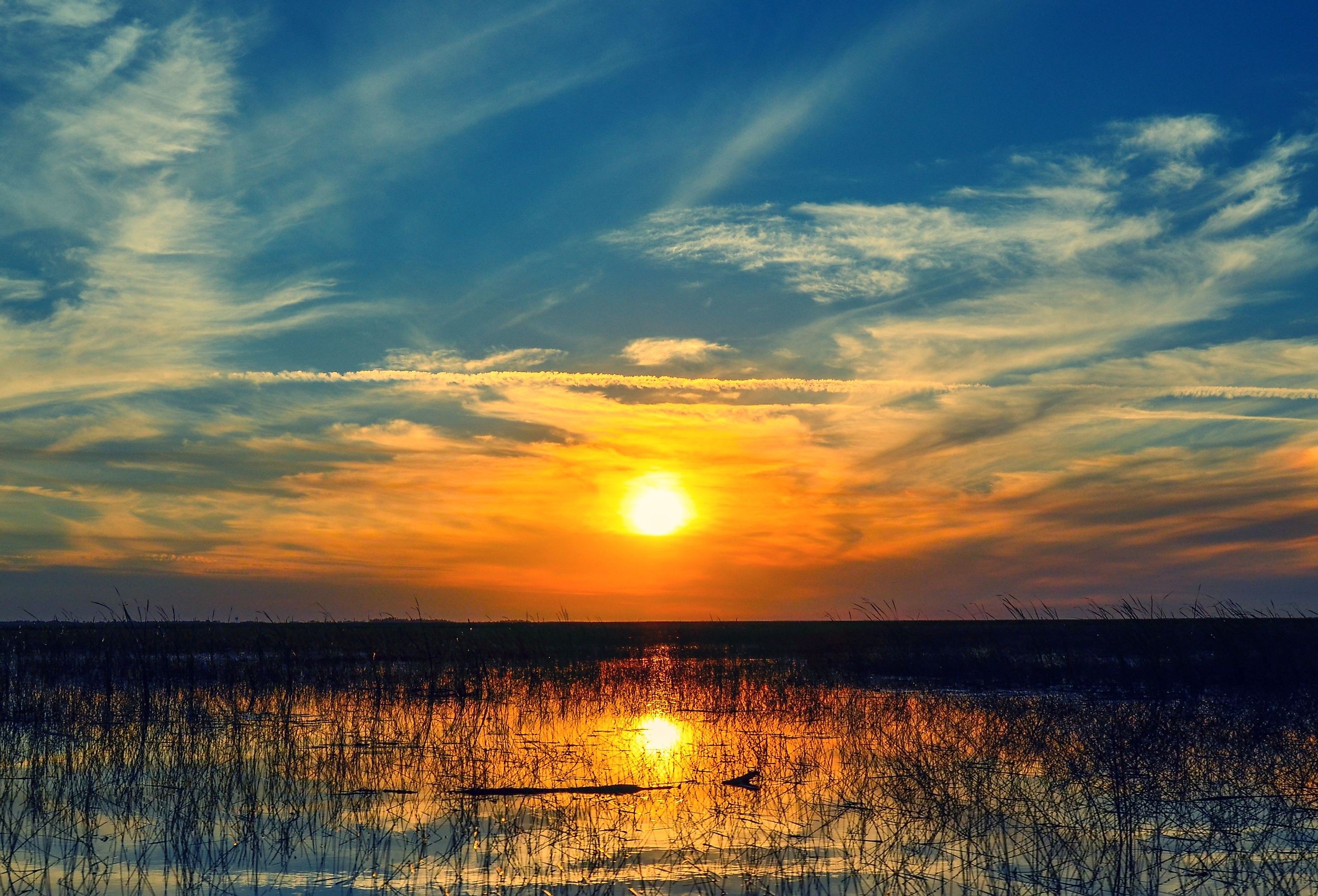
The Most Snake-Infested Lake In Florida
Florida's Lake Okeechobee is speckled with tourists, teeming with fish and crawling with snakes. The "Big O," as it is commonly called, or "Big Water" (from the roots of its Seminole name), is plunked in the south-central portion of south Florida—an area with 34 species of native snakes, plus at least three exotic additions that have established breeding populations. While the cast of characters at the state's largest lake is certainly curtailed compared to the broader region, plenty of serpents still have been verified or are strongly suspected to be present. Let's wade into Okeechobee's shallow, fresh waters to better understand Florida's most snake-infested lake.
Where is Lake Okeechobee?
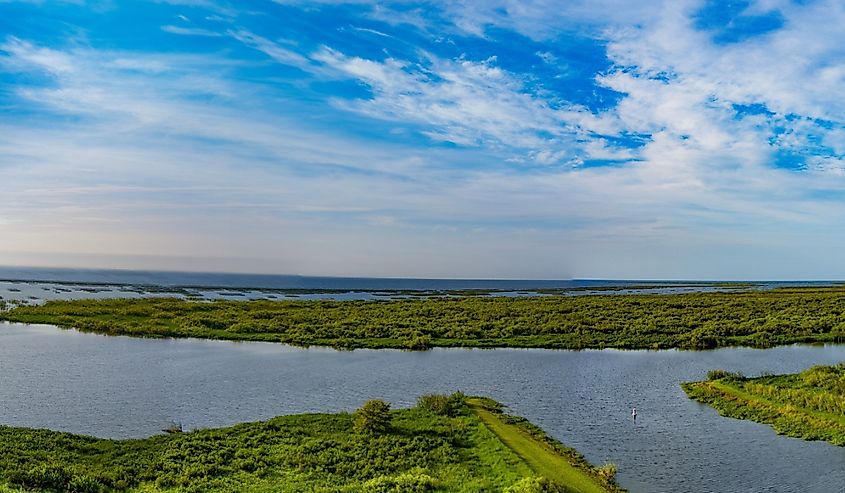
In addition to its two colloquial names, Lake Okeechobee is also referred to as "Florida's inland sea." This is because of its relative position on the Florida Peninsula (less than 50 miles west of West Palm Beach, on the Atlantic Coast, and just over 60 miles east of Fort Myers, near the Gulf of Mexico) and its extraordinary size. Shallow as it may be (i.e., an average depth of nine feet), Big O boasts a surface area of 730 square miles. This makes it not only the largest lake in Florida but the second-largest freshwater lake located entirely within the contiguous United States.
Lake Okeechobee is also part of two significant recreational passageways: aquatic and terrestrial. In terms of the former, Big O is the focal point of the 154-mile Okeechobee Waterway. This boating network cuts across the southern peninsula, from Fort Myers to Stuart, via the Caloosahatchee River (west) and St. Lucie Canal (east). It also makes a dent in the 1,300-mile Florida National Scenic Trail, thanks to its 110-mile, mostly paved circuit, which takes hikers and bikers for a tour atop the 35-foot-tall, 100-foot-wide Herbert Hoover Dike.
In terms of other points of connection, Lake Okeechobee is fed by three major natural tributaries, including Fisheating Creek, Taylor Creek, and the Kissimmee River. As for our topic of interest, Big O sits immediately north of the Everglades—a veritable snake haven that has repeatedly made headlines in recent decades because of its unstoppable outbreak of Burmese pythons.
The Snakes of Lake Okeechobee
Burmese Python
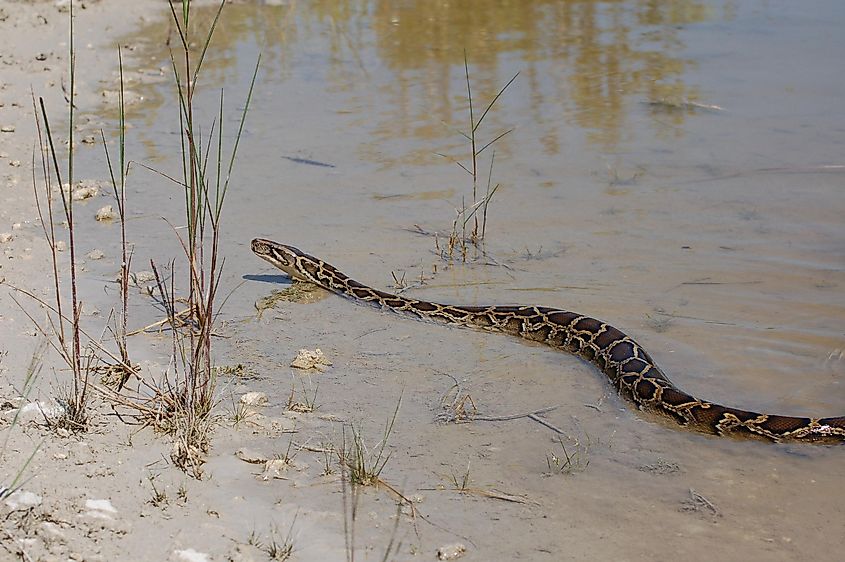
Lake Okeechobee marks the northernmost extent of the invasive Burmese python's known territory (an ever-growing region that extends south to Key Largo and horizontally from western Broward County to Collier County). Individuals caught in Florida typically range between six to nine feet in length, but the largest Burmese python (Python bivittatus) wrangled in The Sunshine State was a whopping 18 feet (and weighed 215 pounds!). Something of that size would do well in the large and well-stocked waters of Lake Okeechobee, but so far, they have only been spotted near Big O, not actually in it.
Florida Cottonmouth
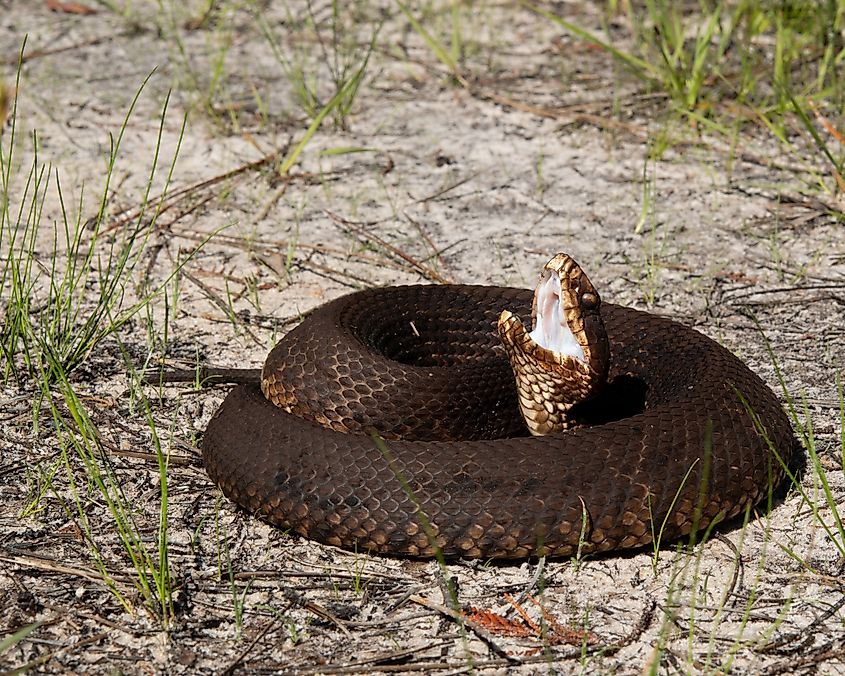
Given its semi-aquatic nature, the Florida cottonmouth (Agkistrodon conanti) is also commonly called a water moccasin. This venomous snake has a hefty body that stretches 30 to 48 inches long. Juveniles start off light in color, with a yellow-tipped tail, before developing a blend of light and dark crossbands. Adults may eventually appear almost uniformly black. And, of course, when flashing its fangs, the cottonmouth also displays a white, fleshy mouth, after which it takes its name. Florida cottonmouths are found in every county and seek wetlands and other waterways (such as Lake Okeechobee).
Watersnakes
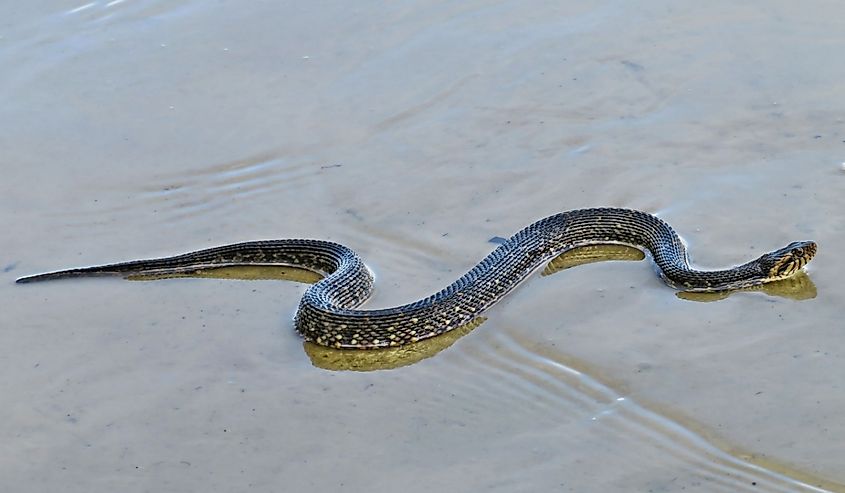
It makes perfect sense that water snakes would be drawn to the bountiful habitats of Lake Okeechobee. Some of the primary residents include the brown watersnake (Nerodia taxispilota), Florida green watersnake (Nerodia floridana), southern watersnake (Nerodia fasciata), aka banded or Florida watersnake, and the striped swamp snake (Liodytes Allen), aka striped crayfish snake (because of its preferred food source). These snakes are non-venomous, excellent swimmers (though they are not bound to the water), and enjoy a diet rich in freshwater fish (more on this in a moment).
Brahminy Blindsnake
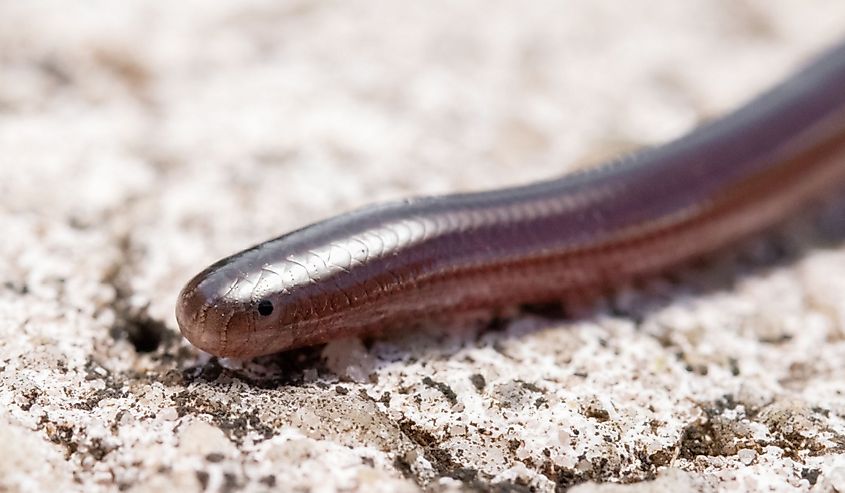
Another invasive snake species to watch out for near Lake Okeechobee (and to report if sighted) is the Brahminy blindsnake (Indotyphlops braminus). This short (i.e., 4.4 to 6.5 inches), thin and shiny silver gray, charcoal gray, or even purple-colored snake is indigenous to southern Asia but first made its way to Miami in the 1970s. It has been verified in much of the southern peninsula, including counties adjacent to Big O. Rather than make for the water, these curious serpents might be burrowing around the perimeter. Thankfully, Brahminy blindsnakes are non-venomous and, therefore, not dangerous to humans or pets. In fact, they are often mistaken for earthworms!
South Florida Mole Kingsnake
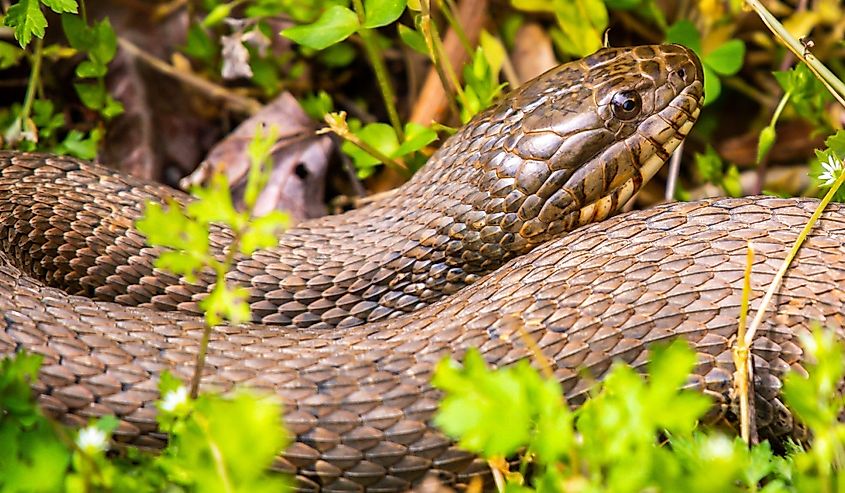
Our final snake of interest goes to great lengths to avoid the spotlight. The non-venomous South Florida mole kingsnake (Lampropeltis occipitolineata) is endemic to Florida and only occurs in the peninsular portion: from Brevard County (north) to Lake Okeechobee (south). This moderate-sized (i.e. 30 to 42 inches), gray/brown/tan snake with reddish-brown blotches is also a burrower, and therefore, is rarely seen. However, given its propensity for agricultural fields, it makes sense that it would be drawn to the areas surrounding Big O.
Parting Thoughts On "Big O"
Even though there is a healthy blend of native/invasive and venomous/non-venomous snakes at Lake Okeechobee, it is still an attractive and valuable resource for Floridians. For starters, Big O, which is managed by the Army Corps of Engineers, hosts exceptional habitat diversity (though recent, industrial-based threats are mounting). It also acts as a buffer against storms and floods, supplies the local communities with ample drinking water and irrigation, and is renowned for commercial and sport fishing. In terms of the latter, largemouth bass and black crappie fisheries produce hundreds of millions of dollars in retail sales across the surrounding five counties. Anglers also come by the thousands yearly to hook any of the 40 native species and/or several legitimately introduced species.
All those fish attract not only the aforementioned snakes but also a wealth of waterfowl, which, in turn, attract recreational hunters. Other popular pastimes at Big O include cycling, hiking, boating (try an airboat tour), and wildlife watching. I'd love to tell you that swimming is included in this list, but given the rising agricultural contaminants and the estimated 30,000 alligators that live in Lake Okeechobee, splashing around might be ill-advised. But that's a whole other article!











